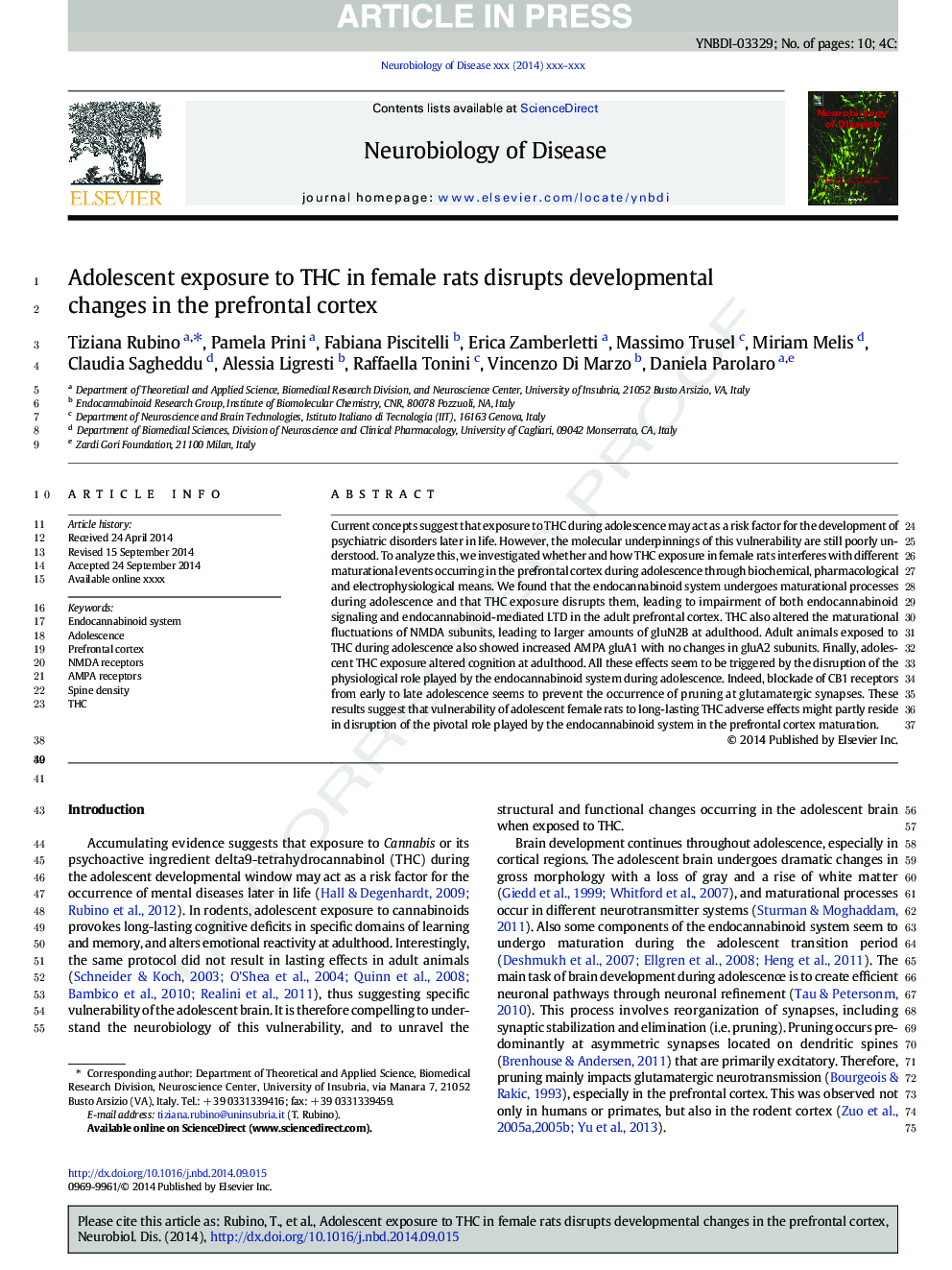| Article ID | Journal | Published Year | Pages | File Type |
|---|---|---|---|---|
| 6021670 | Neurobiology of Disease | 2015 | 10 Pages |
Abstract
Current concepts suggest that exposure to THC during adolescence may act as a risk factor for the development of psychiatric disorders later in life. However, the molecular underpinnings of this vulnerability are still poorly understood. To analyze this, we investigated whether and how THC exposure in female rats interferes with different maturational events occurring in the prefrontal cortex during adolescence through biochemical, pharmacological and electrophysiological means. We found that the endocannabinoid system undergoes maturational processes during adolescence and that THC exposure disrupts them, leading to impairment of both endocannabinoid signaling and endocannabinoid-mediated LTD in the adult prefrontal cortex. THC also altered the maturational fluctuations of NMDA subunits, leading to larger amounts of gluN2B at adulthood. Adult animals exposed to THC during adolescence also showed increased AMPA gluA1 with no changes in gluA2 subunits. Finally, adolescent THC exposure altered cognition at adulthood. All these effects seem to be triggered by the disruption of the physiological role played by the endocannabinoid system during adolescence. Indeed, blockade of CB1 receptors from early to late adolescence seems to prevent the occurrence of pruning at glutamatergic synapses. These results suggest that vulnerability of adolescent female rats to long-lasting THC adverse effects might partly reside in disruption of the pivotal role played by the endocannabinoid system in the prefrontal cortex maturation.
Keywords
Related Topics
Life Sciences
Neuroscience
Neurology
Authors
Tiziana Rubino, Pamela Prini, Fabiana Piscitelli, Erica Zamberletti, Massimo Trusel, Miriam Melis, Claudia Sagheddu, Alessia Ligresti, Raffaella Tonini, Vincenzo Di Marzo, Daniela Parolaro,
